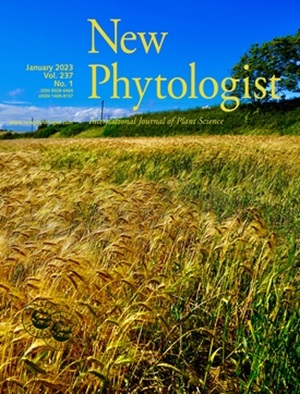Breaking into nature's secret medicine cabinet: lichens – a biochemical goldmine ready for discovery
IF 8.3
1区 生物学
Q1 PLANT SCIENCES
引用次数: 0
Abstract
Secondary metabolites are a crucial source of bioactive compounds playing a key role in the development of new pharmaceuticals. Recently, biosynthetic research has benefited significantly from progress on various fronts, including reduced sequencing costs, improved genome/metabolome mining strategies, and expanding tools/databases to compare and characterize chemical diversity. Steady advances in these fields are crucial for research on non-modal organisms such as lichen-forming fungi (LFF). Although most fungi produce bioactive metabolites, biosynthetic research on LFF (c. 21% of known fungi) lags behind, primarily due to experimental challenges. However, in recent years, several such challenges have been tackled, and, in parallel, a critical foundation of genomic data and pipelines has been established to accomplish the valorization of this potential. Integrating these concurrent advances to accelerate biochemical research in LFF provides a promising opportunity for new discoveries. This review summarizes the following: recent advances in fungal and LFF omics, and chemoinformatics research; studies on LFF biosynthesis, including chemical diversity and evolutionary/phylogenetic aspects; and experimental milestones in LFF biosynthetic gene functions. At the end, we outline a vision and strategy to combine the progress in these research areas to harness the biochemical potential of LFF for pharmaceutical development.闯入大自然的秘密药柜:地衣--一座有待发掘的生化金矿
本文章由计算机程序翻译,如有差异,请以英文原文为准。
求助全文
约1分钟内获得全文
求助全文
来源期刊

New Phytologist
生物-植物科学
自引率
5.30%
发文量
728
期刊介绍:
New Phytologist is an international electronic journal published 24 times a year. It is owned by the New Phytologist Foundation, a non-profit-making charitable organization dedicated to promoting plant science. The journal publishes excellent, novel, rigorous, and timely research and scholarship in plant science and its applications. The articles cover topics in five sections: Physiology & Development, Environment, Interaction, Evolution, and Transformative Plant Biotechnology. These sections encompass intracellular processes, global environmental change, and encourage cross-disciplinary approaches. The journal recognizes the use of techniques from molecular and cell biology, functional genomics, modeling, and system-based approaches in plant science. Abstracting and Indexing Information for New Phytologist includes Academic Search, AgBiotech News & Information, Agroforestry Abstracts, Biochemistry & Biophysics Citation Index, Botanical Pesticides, CAB Abstracts®, Environment Index, Global Health, and Plant Breeding Abstracts, and others.
 求助内容:
求助内容: 应助结果提醒方式:
应助结果提醒方式:


